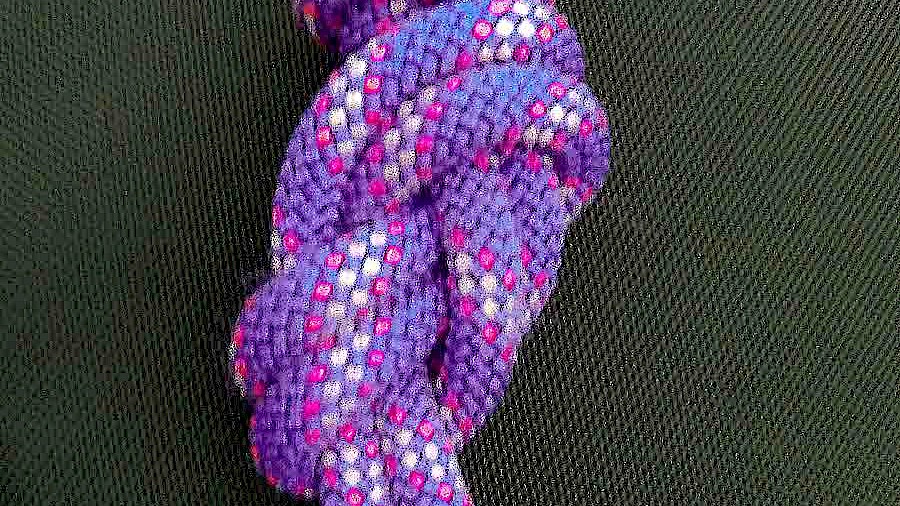Believe it or not, when I started climbing I belayed using an Italian hitch (at least body belays were considered a thing of the past already), tied in using a re-threaded overhand knot and nobody in my climbing circle knew any different. No, I did not learn to climb in a barn, in fact my first climbing experiences were in the German Alpine Association (DAV), an organisation considered to be world leading in setting standards in the outdoor industry for many years. When I first came over to the UK and started climbing here I was shocked to fail my first ever safety test on UK soil based on not having tied a stopper knot. To be clear, at this point I had climbed going on 12 years safely, belayed with a tube device and tied in using a standard figure of eight. When I queried as to why a stopper knot was required the answer I got was "without it the knot is unsafe as it may come undone" - a fairly common response when questioning the need for a stopper knot.
Back then I didn't care too much about the issue and simply tied the stopper knot next time round to pass the test and climb. However, since instructing in the UK I have come to realise that climbers here seem to be more capable of tying a stopper knot than to tie a figure of eight. One of my kid climbers summed it up perfectly (she was only 7 at the time): "If this knot (the figure of eight) stops me from falling, then why do I need this one (the stopper knot)?". The vast majority of new breed recreational climbers seem to follow the stopper knot trend without actually understanding why. In light of this don't radically stop using a stopper knot if it has become part of your climbing routine and you are used to it, but please don't criticise those of us who decide against using one personally. Here's why -
Firstly, a correctly tied and tightened figure of eight with a reasonable length of tail on the rope will NOT come undone without significant work having to be applied. A figure of eight under load will tighten and exert a vice grip on the strands of rope within it - hence the difficulty in untying it when you have taken a big fall or sat on it for a while. Consider the following test if you want to be truly amazed at how strong a figure of eight is:
- Tie a figure of eight on a bight into a climbing rope and clip into a low hanging quickdraw
- Pull as hard as you can on the rope (don't hang of it for the test though)
- Now untie the first loop of the figure of eight - simply pull the tail end from the first loop causing the knot to be unfinished (and UNSAFE)
- Pull again as hard as you can
- Repeat steps 3 and 4 until the knot pulls apart. Chances are this will not happen until only one final locking strand is left. What does this tell you about the integrity and stability of a figure of eight?
Secondly, a stopper knot is considered and accepted as essential when tying in using a bowline, even though a correctly tied bowline will not come undone under normal conditions. Consider the need for a stopper knot on a bowline a sign of the complexity of the knot and the delicate nature of it. A bowline can invert, slip, wiggle free and generally behave in unexpected ways.
One of my biggest concerns with enforcing a stopper knot on a figure of eight is the focus of the tying in no longer lying on the integral part - the figure of eight. Having worked with children and teaching them to climb the figure of eight is a reasonably simple concept to understand. The stopper knot has consistently caused them confusion and distracted from the main knot. Arguably a student is only ever as good as their teacher's instruction, so I hold my hands up and admit that my instruction of the stopper knot was most likely not as great as it could be. However, my main focus when teaching tying in is the main load bearing and securing knot - the figure of eight. In fact many people claim to tie a stopper knot and merely tie a small overhand knot around the rope - this knot would instantly come undone under load and therefore provides a potentially fatal sense of security.
Watching people tie in over the years many tie in well, with or without stopper knot. Ironically some of the fiercest proponents of always having to tie in with a stopper knot finish were also the ones who tied it badly, wrong or dangerously. For example, a stopper knot should sit flush on the top of the figure of eight. This is to avoid the knot slipping should the figure of eight fail (see the first statement above), but also avoids an isolated, non-load bearing loop close to the lead clipping area. In by now 17 years of climbing I have witnessed around a dozen occasions of people tying in wrong and not noticing until after the climb. Only one of these occurred during my time on the continent - 1 in 12 years of regular climbing. This leaves 11 in 5 years of climbing over here. If I now focus purely on figure of eights and discount other tying in knots (such as the bowline) this figure reduces to none in 12 years on the continent, 9 in 5 years in the UK. A common characteristic of the 9 instances in the UK was a form of (whether correct or not) stopper knot with the figure of eight being tied messy and wrong.
This experience brings home my point of making sure your original knot is correct, checked and checked again. For those people who have completed their tying in with a stopper knot since 10,000BC I will say by all means carry on, but make sure to inform yourself about where the knot should sit, how much tail there should be left and make sure to double check your knots regardless. However, please don't insist on people tying a stopper knot to a figure of eight on the basis of "best practice", "safety", "the figure of eight is not safe otherwise" or indeed "everybody does this". If it truly was "best practice" then truly "everybody" would teach it, insist on it and indeed practice it - globally. Go to the alps and you will see the majority of climbers indoors and outdoors not bothering with a stopper on the figure of eight. In fact I have been asked in my old regular center about "that silly rope twirl" (translated) at the end of my knot and why on earth I would waste 15 centimeters of perfectly good rope, 10 seconds of perfectly good climbing time and cause more bulk around my clipping area.
To recap:
No matter which knot you use to tie in, understand how it works, why it works and what you need to do to make it safe.
Double check your knot after tying, then again once your partner is ready and checked as well and a lucky third time just before you leave the ground.
Don't become complacent. Always check your knot and your partner's knot - no matter how experienced you are.


Leave a comment